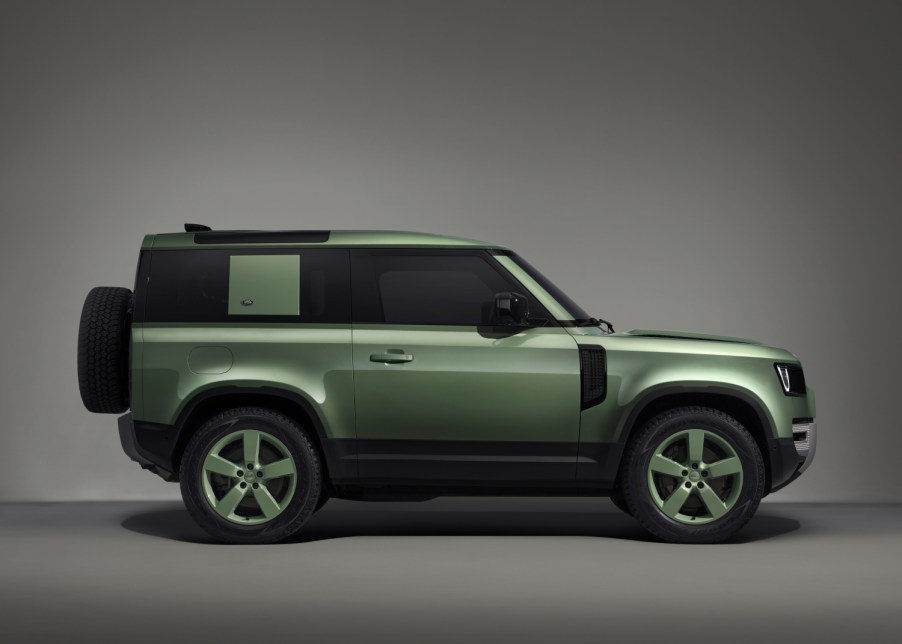
Land Rover Is Asking a $45,000 Premium for This Special Edition
Step into your Land Rover dealer soon and you may see a unique green Defender. No, that green doesn’t mean it’s “green,” but instead if you see a Cashmere Green Defender SUV, that means it s a Defender 75th Limited Edition, celebrating the 1948 launch of the original Series 1 Defender. If you’ve ever seen an old Land Rover Defender, it likely came in a similar shade of military green.
What is the new Defender 75th Limited Edition?

The Cashmere Green Defender 75th Limited Edition celebrates, as you guessed, 75 years of Rovers. But, in this case, it does so with a pair of all-green Defenders in either the 90, for $91,880, or 110 versions, for $94,380. The Defender 110 is the longer wheelbase, four-door, version of the Defender. The Anniversary package is a $45,000 upgrade for a Defender, which normally starts at $53,500.
On the outside, you can spot an anniversary edition not just by its green paint (like the original) but the 75th Anniversary badging. On the inside, the Defender 7t5th Limited Edition has a folding fabric roof, instead of a sunroof. It also gets the upgraded heated, power 14-way driver and passenger seats, and some other touches, like green accents on the doors and the dash. It also gets a heated steering wheel and three-zone climate control controls.
The new Defender is green and “greener”

Land Rover is committing to going all electric soon. But, before it gets there, it’s taking some baby steps with hybrid power. The new Defender 75th gets Rover’s P400 engine with a mild hybrid electric booster. The P400 engine is an inline six-cylinder engine and hybrid that makes a combined 395 horsepower. You can order a regular Defender 90 with a stonking 5.0-liter gas V8 that makes 518 horsepower, or P300 that gasoline engine that makes 296 horsepower.
Why did the original 1948 Series 1 matter?

After World War II ended, there was a big need in England for a tough, reliable, and capable vehicle, especially in rural areas. Land Rover decided to fill the niche with the Series 1, which had a 1.6-liter or 2.0-liter four-cylinder engines. It basically was a tractor with a roof in that it had leaf springs, a four-wheel-drive transfer case, and a low-speed four-wheel drive mode to pull stumps.
But, this was a simple farm vehicle. It only had a synchronized gearbox for the top two gears, so you had to double-declutch when you were shifting from third to second. That’s a lost art in modern cars.


